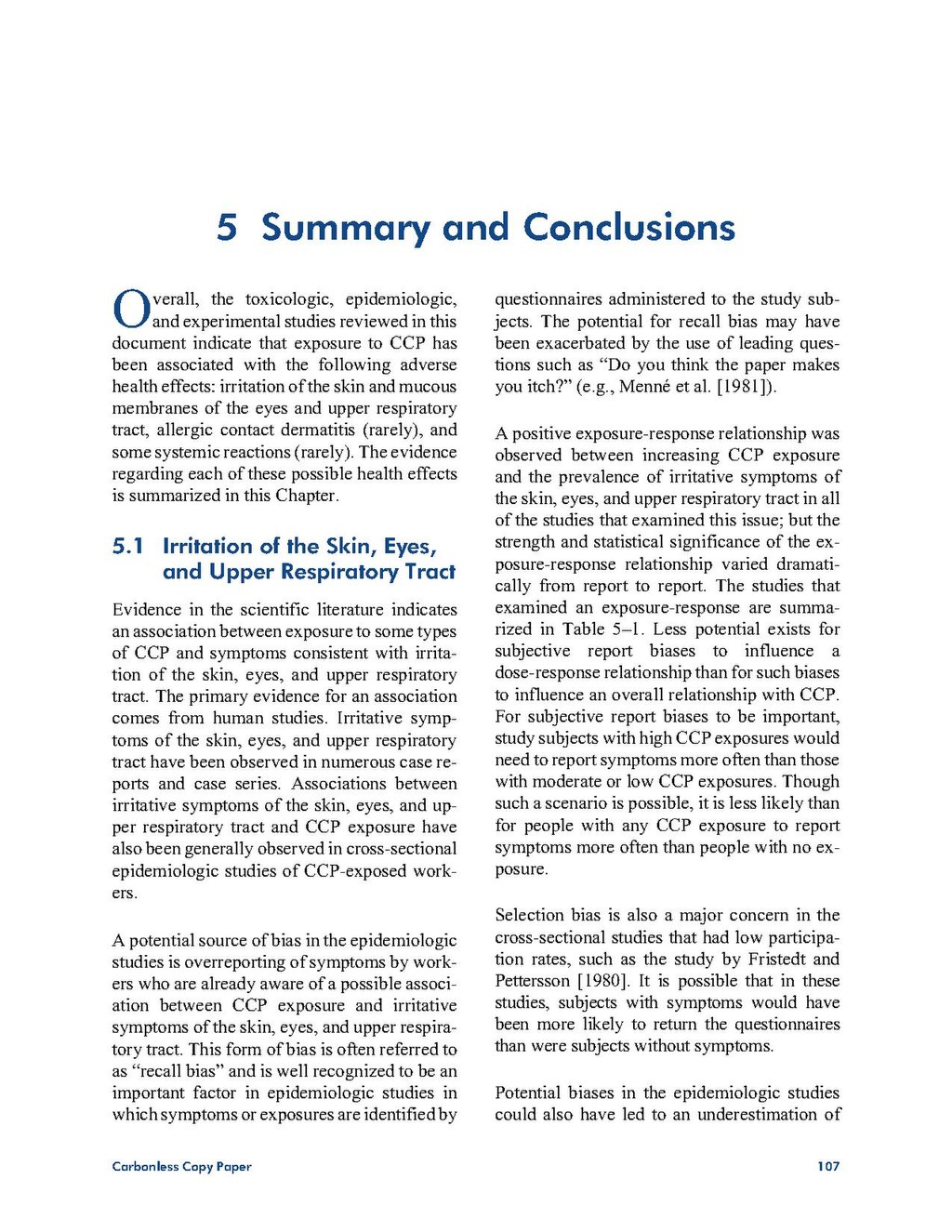5 Summary and Conclusions
Overall, the toxicologic, epidemiologic, and experimental studies reviewed in this document indicate that exposure to CCP has been associated with the following adverse health effects: irritation of the skin and mucous membranes of the eyes and upper respiratory tract, allergic contact dermatitis (rarely), and some systemic reactions (rarely). The evidence regarding each of these possible health effects is summarized in this Chapter.
5.1 Irritation of the Skin, Eyes, and Upper Respiratory Tract
Evidence in the scientific literature indicates an association between exposure to some types of CCP and symptoms consistent with irritation of the skin, eyes, and upper respiratory tract. The primary evidence for an association comes from human studies. Irritative symptoms of the skin, eyes, and upper respiratory tract have been observed in numerous case reports and case series. Associations between irritative symptoms of the skin, eyes, and upper respiratory tract and CCP exposure have also been generally observed in cross-sectional epidemiologic studies of CCP-exposed workers.
A potential source of bias in the epidemiologic studies is overreporting of symptoms by workers who are already aware of a possible association between CCP exposure and irritative symptoms of the skin, eyes, and upper respiratory tract. This form of bias is often referred to as "recall bias" and is well recognized to be an important factor in epidemiologic studies in which symptoms or exposures are identified by
questionnaires administered to the study subjects. The potential for recall bias may have been exacerbated by the use of leading questions such as "Do you think the paper makes you itch?" (e.g., Menné et al. [1981]). A positive exposure-response relationship was observed between increasing CCP exposure and the prevalence of irritative symptoms of the skin, eyes, and upper respiratory tract in all of the studies that examined this issue; but the strength and statistical significance of the exposure-response relationship varied dramatically from report to report. The studies that examined an exposure-response are summarized in Table 5–1. Less potential exists for subjective report biases to influence a dose-response relationship than for such biases to influence an overall relationship with CCP. For subjective report biases to be important, study subjects with high CCP exposures would need to report symptoms more often than those with moderate or low CCP exposures. Though such a scenario is possible, it is less likely than for people with any CCP exposure to report symptoms more often than people with no exposure. Selection bias is also a major concern in the cross-sectional studies that had low participation rates, such as the study by Fristedt and Pettersson [1980]. It is possible that in these
studies, subjects with symptoms would have been more likely to return the questionnaires than were subjects without symptoms.
Potential biases in the epidemiologic studies could also have led to an underestimation of
